How to make a bioreactor with your own hands
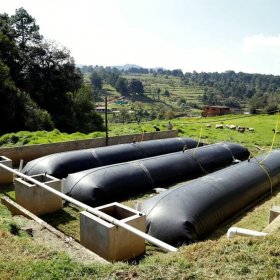
The constant increase in the cost of traditional energy resources pushes home craftsmen to create home-made equipment that allows them to get biogas from their own hands. With this approach to housekeeping, it is possible not only to obtain cheap energy for heating a house and other needs, but also to establish the process of utilizing organic waste and obtaining free fertilizers for subsequent application to the soil.
Excess biogas produced, as well as fertilizers, can be realized at market value to interested consumers, turning into money what literally “lies under your feet”. Large farmers can afford to buy ready-made biogas plants, assembled in the factory. The cost of such equipment is quite high. However, the return on its operation corresponds to the investments made. Less powerful plants operating on the same principle can be assembled on their own from available materials and parts.
Content
What is biogas and how is it formed
Biogas is classified as an environmentally friendly type of fuel. By its characteristics, biogs largely converge with natural gas produced on an industrial scale. Imagine the technology for biogas production as follows:
- in a special container called a bioreactor, a biomass processing process takes place with the participation of anaerobic bacteria under conditions of airless fermentation for a certain period, the duration of which depends on the volume of loaded raw materials;
- as a result, a mixture of gases is released, consisting of 60% methane, 35% - carbon dioxide, 5% - from other gaseous substances, among which there is a small amount of hydrogen sulfide;
- the produced gas is constantly discharged from the bioreactor and, after purification, is sent for proper use;
- Recycled waste, which has become high-quality fertilizer, is periodically removed from the bioreactor and taken to the fields.
In order to establish biogas production at home in a continuous mode, one must own or have access to agricultural and livestock enterprises. It is economically viable to produce biogas only if there is a source of free supply of manure and other organic waste from animal husbandry.
Gas heating remains the most reliable way of heating. You can learn more about autonomous gasification in the following material:https://aquatech.tomathouse.com/en/gazosnabzhenie/avtonomnoe-gazosnabzhenie-chastnogo-doma.html
Types of Bioreactors
Plants for the production of biogas differ in the type of loading of raw materials, the collection of gas obtained, the location of the reactor relative to the surface of the earth, the material of manufacture. Concrete, brick and steel are the most suitable materials for the construction of bioreactors.
According to the type of loading, bio-plants are distinguished, into which a given portion of the raw material is loaded and a processing cycle takes place, and then it is completely unloaded. Gas production in these plants is unstable, but any kind of raw material can be loaded into them. As a rule, they are vertical and take up little space.
A portion of organic waste is loaded daily into a system of the second type and a portion of finished fermented fertilizers equal in volume is unloaded. The working mixture always remains in the reactor. The installation of the so-called continuous loading stably produces more biogas and is very popular among farmers. Basically, these reactors are located horizontally and are convenient in the presence of free space on the site.
The selected type of biogas collection determines the design features of the reactor.
- balloon systems consist of a rubber or plastic heat-resistant balloon in which a reactor and a gas holder are combined. The advantages of this type of reactor are simplicity of design, loading and unloading of raw materials, ease of cleaning and transportation, low cost. The disadvantages include a short service life, 2-5 years, the possibility of damage as a result of external influences. Tank reactors also include channel-type plants, which are widely used in Europe for the processing of liquid waste and wastewater. Such a rubber top is effective at high ambient temperatures and there is no risk of cylinder damage. The fixed dome design has a fully enclosed reactor and a compensating capacity for sludge discharge. Gas accumulates in the dome; when the next portion of raw materials is loaded, the processed mass is pushed into the compensation tank.
- Bio-systems with a floating dome consist of a monolithic bioreactor located underground and a movable gas tank that floats in a special water pocket or directly in the feed and rises under the influence of gas pressure. The advantage of a floating dome is ease of use and the ability to determine gas pressure from the height of the dome. This is a great solution for a large farm.
- When choosing an underground or installation location above the surface, the slope of the relief should be taken into account, which facilitates loading and unloading of raw materials, enhanced thermal insulation of underground structures, which protects the biomass from daily temperature fluctuations and makes the fermentation process more stable.
The design can be equipped with additional devices for heating and mixing the raw materials.
Is it cost-effective to make a reactor and use biogas
The construction of a biogas plant has the following objectives:
- cheap energy production;
- the production of easily digestible fertilizers;
- savings on connecting to expensive sewers;
- processing of household waste;
- possible profit from the sale of gas;
- reducing the intensity of unpleasant odors and improving the environmental situation in the territory.
To evaluate the benefits of building a bioreactor, a lean host should consider the following aspects:
- biostation costs are a long-term investment;
- home-made biogas equipment and installation of a reactor without involving third-party specialists will be much cheaper, but its efficiency is lower than that of an expensive factory one;
- in order to maintain a stable gas pressure, the farmer should have access to livestock production waste in sufficient quantity and for a long time. In the case of high prices for electricity and natural gas or the lack of gasification, the use of the installation becomes not only profitable, but also necessary;
- for large farms with their own raw materials base, the inclusion of a bioreactor in the system of greenhouses and cattle farms will be a profitable solution;
- for small farms, efficiency can be improved by installing several small reactors and loading raw materials at different time intervals. This will avoid gas interruptions with a lack of feedstock.
To learn how to equip heating in a private house without gas, click here:https://aquatech.tomathouse.com/en/otoplenie/alt_otoplenie/otoplenie-chastnogo-doma-bez-gaza.html
How to build a bioreactor on your own
The decision on the construction was made, now we need to design the installation and calculate the necessary materials, tools and equipment.
Important! Resistance to aggressive acidic and alkaline environments is the main requirement for the bioreactor material.
If a metal tank is available, it can be used subject to a protective coating against corrosion. When choosing a container made of metal, pay attention to the presence of welds and their strength.
A durable and convenient option is a polymer tank. This material does not decay and does not rust. The barrel with thick rigid walls or reinforced will perfectly withstand the load.
The cheapest way is laying out containers made of brick or stone, concrete blocks. To increase the strength, the walls are reinforced and covered inside and out with a multilayer waterproofing and gas-tight coating. The plaster should contain additives that provide the specified properties. The best shape that can withstand all pressure loads is oval or cylindrical.
At the base of this tank, a hole is provided through which spent raw materials will be removed. This hole should be tightly closed, because the system only works effectively in sealed conditions.
Calculation of necessary tools and materials
To lay out the brick container and the device of the entire system, the following tools and materials will be needed:
- tank for mixing cement or concrete mixer;
- drill with nozzle mixer;
- crushed stone and sand for a drainage pad;
- shovel, tape measure, trowel, putty knife;
- brick, cement, water, fine sand, reinforcement, plasticizer and other necessary additives;
- welding machine and fasteners for the installation of metal pipes and accessories;
- a water filter and a container with metal shavings for gas purification;
- Tire cylinders or standard propane cylinders for gas storage.
The size of the concrete tank is determined from the amount of organic waste that appears daily in a private farm or farm. Full-fledged bioreactor operation is possible if it is filled by two-thirds of the available volume.
Let us determine the volume of the reactor for a small private economy: if there are 5 cows, 10 pigs and 40 chickens, then a litter of 5 x 55 kg + 10 x 4.5 kg + 40 x 0.17 kg = 275 kg + is formed during the day of their life activity 45 kg + 6.8 kg = 326.8 kg. To bring the chicken droppings to the required humidity of 85%, add 5 liters of water. Total weight = 331.8 kg. For processing in 20 days it is necessary: 331.8 kg x 20 = 6636 kg - about 7 cubic meters only for the substrate. These are two-thirds of the required volume. To get the result, you need 7x1.5 = 10.5 cc. The obtained value is the necessary volume of the bioreactor.
Remember that getting a large amount of biogas in small containers will not work. The output directly depends on the mass of organic waste processed in the reactor. So, to get 100 cubic meters of biogas, it is necessary to process a ton of organic waste.
Site preparation for bioreactor device
For free biofuel on the site, you need to choose a place for the construction of a reinforced concrete tank, which will serve as a bioreactor.
The optimal location is chosen away from living quarters, places for animals. A warehouse for storing raw materials can be close. It should take into account the level of groundwater and the convenience of loading and unloading biomass. Preferably a place for the transportation of raw materials.
The economical location of the reactor vessel is to build it below ground level. The slope of the terrain is also very convenient. This will reduce the cost of thermal insulation and facilitate the loading of organic substrate.
Reliability of the design and durability of the reactor depends on the preparation of the bottom and walls of the pit for the tank. The walls are strengthened and sealed with plastic, concrete, and polymer rings are used. Important and thorough warming. As a cheap insulation use straw, clay, dry manure and slag, improvised materials.
Assembly and installation
To save the budget, it is optimal to mount a simple and reliable design without bells and whistles, and then, during operation and when financial opportunities appear, add additional elements for heating, automation, control.
Step-by-step instructions for assembling and installing a bioreactor will help to mount the installation on your own.
- Dig a pit, pour a leveling layer of sand at the bottom, lay the entire pit with PVC film, then pour a heat-insulating layer of expanded clay, straw, align it to the horizon. Mount pipes for loading and unloading the substrate. The diameter of the pipes for raw materials must have a diameter of at least 300 mm, otherwise they will clog.
- Lay out a brick container or install a finished one. Insulate the side walls of the reactor by coating it with clay and straw in several layers or by using modern heaters, for example, polystyrene foam, foamed polyurethane foam.
- To make a gas drainage system consisting of vertical pipes with numerous holes in the body. Such a system will replace the mixers.
- Cover the outer layer of the loaded bio-material with a special film to create a slight excess pressure and accumulate biogas under the dome. Install a dome, which should be airtight and a gas outlet pipe at the top, filters for cleaning an airtight hatch, a water seal. Gas is accumulated and stored in special gas bags.
Bioreactor launch
- For the bioreactor to work effectively, it is necessary to load it with raw materials at 2/3 of the volume, the temperature necessary for the bacteria to work, so the biomass feed hopper should be placed on the sunny side so that it warms up.
- The loading of a new one and the withdrawal of spent organic substrate is cheaper and easier to carry out according to the overflow principle, i.e. raising the level of organic matter inside the reactor when introducing a new portion will remove the substrate through the discharge pipe in a volume equal to the volume of the introduced material.
- Download a batch of bacteria. Reheat if necessary.
Correct gas removal from the bioreactor
The gas obtained during the fermentation of organics is removed through a special hole provided in the design of the upper part of the lid, which tightly closes the tank. To exclude the possibility of mixing biogas with air, it is necessary to ensure its removal through a water lock (water lock).
It is possible to control the pressure of the gas mixture inside the bioreactor with the help of a cap, which should rise with excess gas, that is, play the role of a release valve. As a counterweight, you can use a regular weight. If the pressure is normal, then the produced gas will flow through the outlet pipe into the gas tank, being purified in water along the way.
Rules of operation and safety
Constant loading of regular batches and unloading of finished fertilizers, control of fermentation conditions will ensure the correct operation of the biogas plant.
Specialized firms sell batches of organically fermenting bacteria to produce biogas.
There are mesophilic, thermophilic and psychrophilic bacteria. Complete fermentation of organics with the participation of thermophilic bacteria will occur in 12 days. Mesophilic bacteria work more slowly, they process raw materials in 20 days.
The biomass in the reactor must be mixed at least twice a day, otherwise a crust will form on the surface, which prevents the free exit of biogas. In the cold season, the reactor should be heated, maintaining the optimum temperature for the highest product output.
It is not difficult to make a fireplace for an apartment using clean fuels if there is a due desire and relevant instructions. Details:https://aquatech.tomathouse.com/en/otoplenie/biokamin-svoimi-rukami.html
The organic mixture loaded into the reactor should not contain antiseptics, detergents, chemicals harmful to the life of bacteria and slowing down the production of biogas.
Important! Biogas is flammable and explosive.
For the bioreactor to work properly, the same rules must be followed as for any gas installation. If the equipment is tight, biogas is diverted to the gas tank in a timely manner, then there will be no problems.
If the gas pressure exceeds the norm or will poison in case of leakage, there is a risk of explosion, therefore it is recommended to install temperature and pressure sensors in the reactor. Inhaling biogas is also harmful to human health.
How to ensure biomass activity
You can speed up the process of biomass fermentation by heating it. As a rule, in the southern regions this problem does not arise. The ambient temperature is sufficient for the natural activation of fermentation processes. In regions with severe climatic conditions in winter, without heating, it is generally impossible to operate a biogas plant. After all, the fermentation process starts at a temperature exceeding the mark of 38 degrees Celsius.
There are several ways to organize the heating of a tank with biomass:
- connect a coil located under the reactor to the heating system;
- install electric heating elements in the base of the tank;
- provide direct heating of the tank by using electric heaters.
Bacteria that affect methane production are in a dormant state in the feed itself. Their activity rises at a certain temperature level. Installing an automated heating system will ensure a normal flow of the process. Automation will turn on the heating equipment when the next cold party enters the bioreactor, and then turn it off when the biomass warms up to a predetermined temperature level.
Such temperature control systems are installed in boilers, so they can be purchased at stores specializing in the sale of gas equipment.
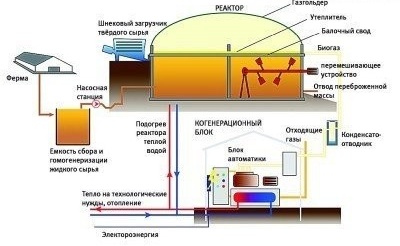
The diagram shows the entire cycle, starting from the loading of solid and liquid raw materials, and ending with the diversion of biogas to consumers
It is important to note that it is possible to activate the production of biogas at home by mixing the biomass in the reactor. For this, a device is made that is structurally similar to a household mixer. The device can be set in motion by a shaft that is led out through an opening located in the lid or walls of the tank.
What special permissions are required for the installation and use of biogas
In order to build and operate a bioreactor, as well as use the obtained gas, it is necessary at the design stage to take care of obtaining the necessary permits. Approval must be done with the gas service, firefighters and Rostekhnadzor.In general, the rules for installation and operation are similar to the rules for using conventional gas equipment. Construction must be carried out strictly according to SNIPs, all pipelines must be yellow and have the appropriate markings. Ready-made systems manufactured at the factory are many times more expensive, but they have all the supporting documents that meet all technical requirements. Manufacturers give a guarantee on the equipment and perform maintenance and repair of their products.
A home-made biogas plant can save on energy costs, which occupy a large share in determining the cost of agricultural products. Lower production costs will increase the profitability of the farm or private farm. Now that you know how to get biogas from existing waste, it remains only to put the idea into practice. Many farmers have long learned how to make money from manure.
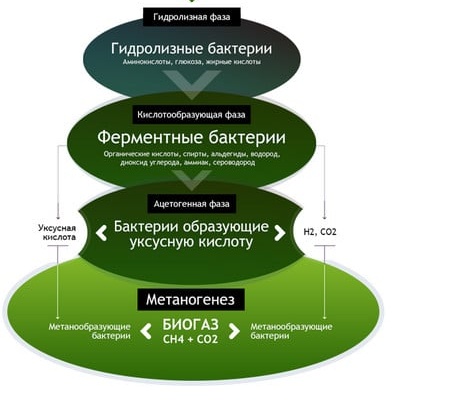
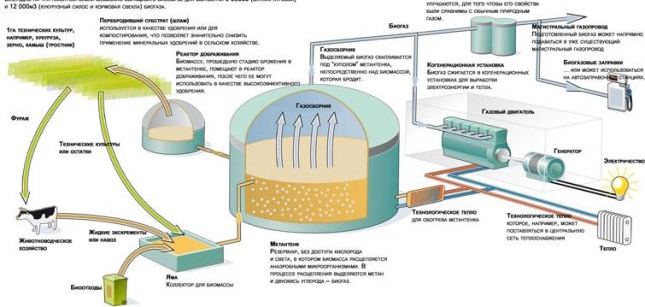
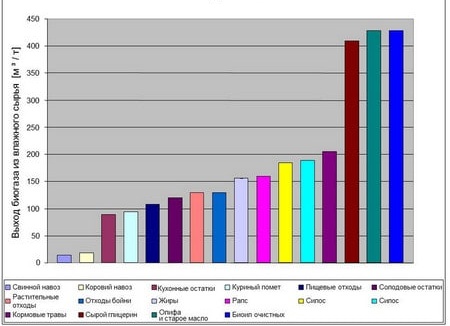
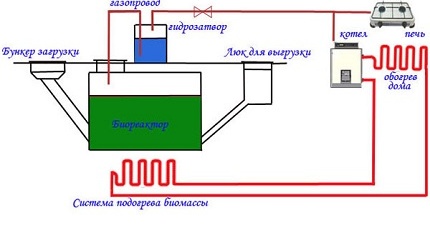
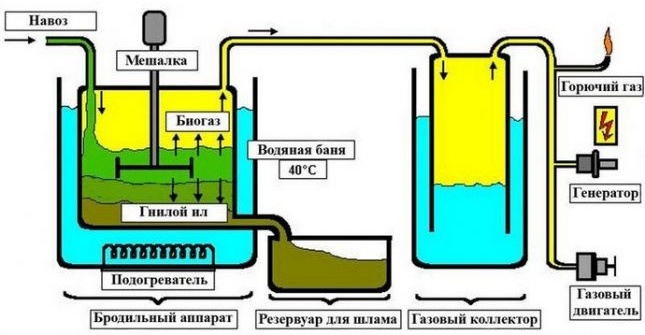
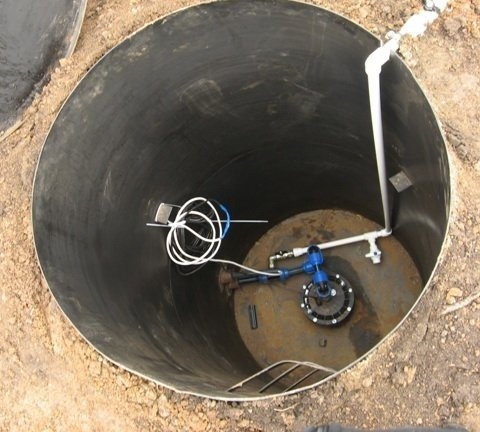
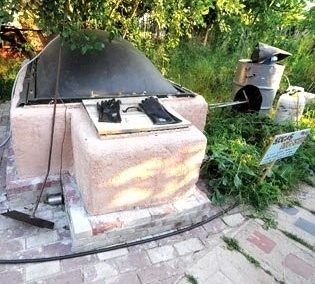
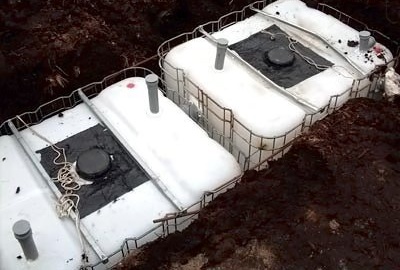
34 comments